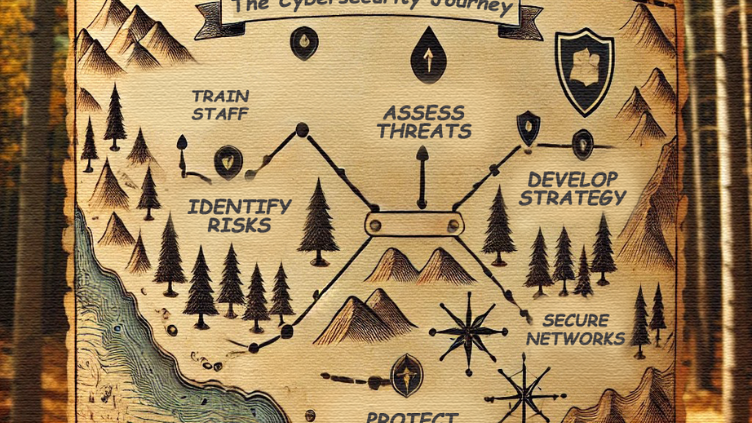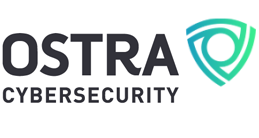The SMB Executive’s Guide to Navigating the Cyber Wild
Executives who lead a small or medium-sized business (SMB) rely on technology to grow and succeed. But anytime technology is in the mix, there is the inherent risk of dealing with hackers, data breaches, and online scams. Cybersecurity is essential to keeping your business, your customers, and your data safe.
If that sounds overwhelming, there’s good news: you don’t have to be a tech expert or understand everything about cybersecurity to be a great leader. Just a few simple measures can make a big difference in helping you deal with key threats and take practical steps to protect your company.
If you are looking for ways to make your company more secure in the cyber wild, the journey starts here.
Surveying the Scene: Why Cybersecurity Matters for SMBs
Small and medium-sized businesses are prime targets for cyberattacks because they often lack the resources of larger enterprises. Despite 43% of cyberattacks targeting SMBs, many believe they’re too small to be at risk. A single breach can cause severe financial, reputational, and operational damage.
Cybercrime is on the rise, with global costs expected to reach $10.5 trillion annually by 2025. Automated bots frequently target SMBs, exploiting vulnerabilities. Ransomware-as-a-service (RaaS) has made cyberattacks more accessible to criminals, while advanced phishing campaigns bypass traditional defenses.
The Consequences of a Cyber Breach
There are various ways that SMBs pay the price when data is breached. Here are four main areas of risk:
- Financial Impact: SMBs face an average breach cost of $4.35 million globally, including lost revenue, remediation, fines, and legal fees.
- Operational Impact: Malware or ransomware downtime can cripple operations, with many businesses never fully recovering.
- Reputational Damage: Loss of customer trust and brand credibility often leads to long-term revenue losses.
- Regulations and Compliance: Governments and industries increasingly mandate cybersecurity standards (e.g., GDPR, HIPAA), and non-compliance can put you at risk for fines and lost contracts.
Cyber Basecamp Basics
Executive leaders can start by ensuring basic steps are in place to protect their SMB operations and data from cyber threats. Essential measures include:
- Strong Passwords & Multi-Factor Authentication (MFA): Your employees should be using unique, complex passwords for all accounts and enabling MFA for an extra layer of security against unauthorized access.
- Regular Software Updates and Patching: Systems, software, and devices need to be up to date, with the latest patches applied to fix vulnerabilities and minimize exploitation risks.
- Secure Wi-Fi Networks: Protect your Wi-Fi with a strong password and enable security features like encryption. Avoid default router settings to prevent easy hacking. Use a firewall to block unwanted access and safeguard your business.
- 24/7 Monitoring and Threat Hunting: Employ continuous monitoring tools and threat-hunting services to identify and respond to potential attacks in real-time, reducing downtime and damage to your business.
- Anti-Virus and Endpoint Protection: Install reputable anti-virus software and ensure endpoint protection is in place to detect and block malicious activity.
- Consistent Risk Assessments and Management: Conduct regular cybersecurity risks assessments to identify vulnerabilities and address them with a proactive management plan.
Mapping Your Approach: Cybersecurity Frameworks for SMBs
Cybersecurity frameworks, like the NIST Cybersecurity Framework, provide SMB leaders with a structured approach to protecting their business from cyber threats. These frameworks outline key steps, such as identifying risks, protecting assets, detecting threats, responding to incidents, and recovering operations.
Adopting a framework starts with understanding your business’s unique risks and needs. Begin by assessing your current cybersecurity practices, then align them with the framework’s guidelines. Be sure to prioritize implementing the most critical protections first, such as securing data and systems. To ensure your business stays resilient and protected, review and update your approach on a regular basis.
Understanding the evolving threat landscape and building proactive defenses is the first step toward staying safe in the digital age. By championing these protection strategies, SMB executives can create a strong cybersecurity foundation to protect against evolving threats and ensure business continuity.
Need a no-nonsense guide to help you navigate cybersecurity for your SMB? Access our Cybersecurity Field Guide for SMBs for more insights and tips!
As Your Trusted Cybersecurity Team, Ostra makes cybersecurity simple and accessible to businesses of all sizes. Ostra provides its partners and their clients with a multi-layered, comprehensive and fully managed Security as a Service.



